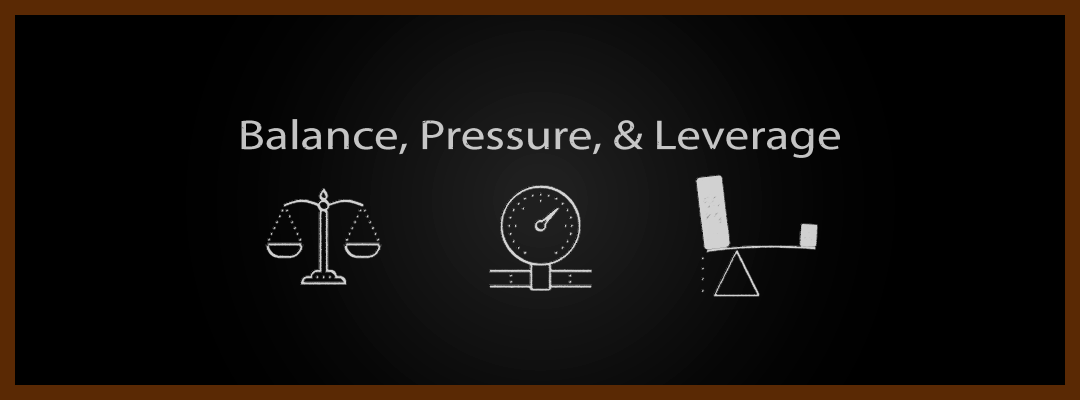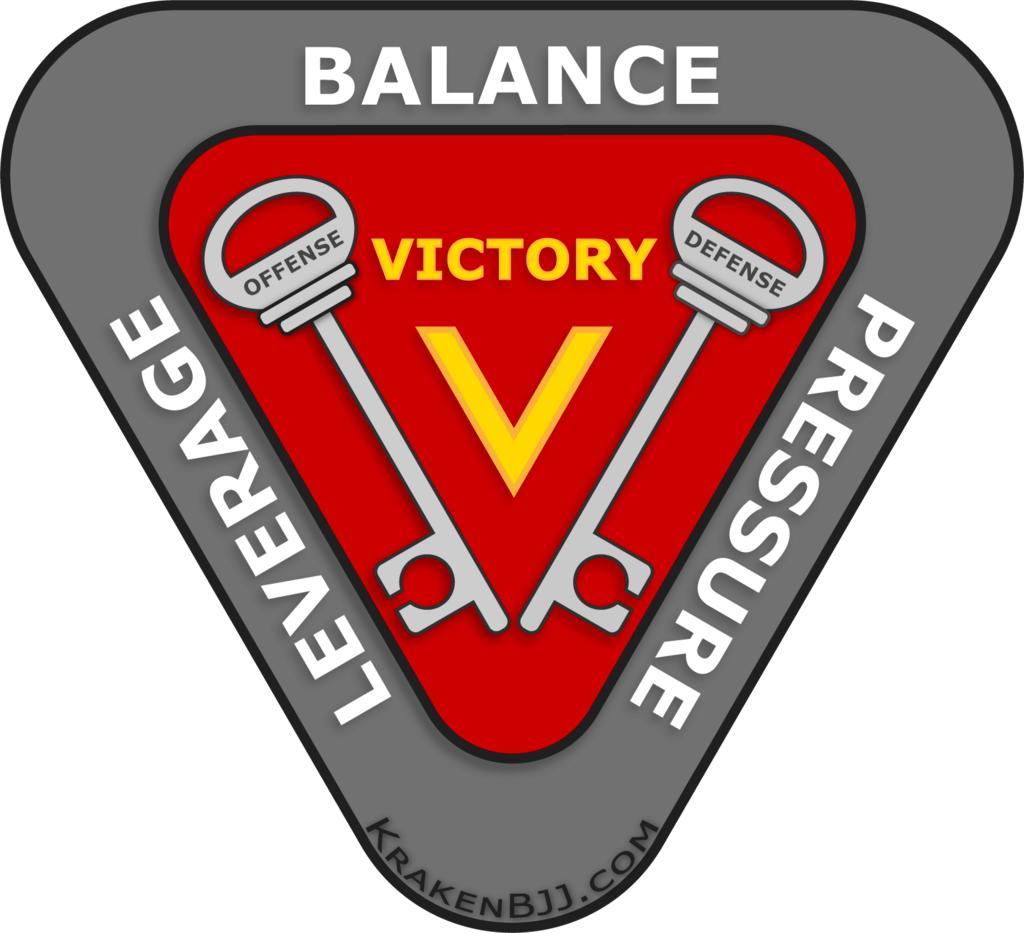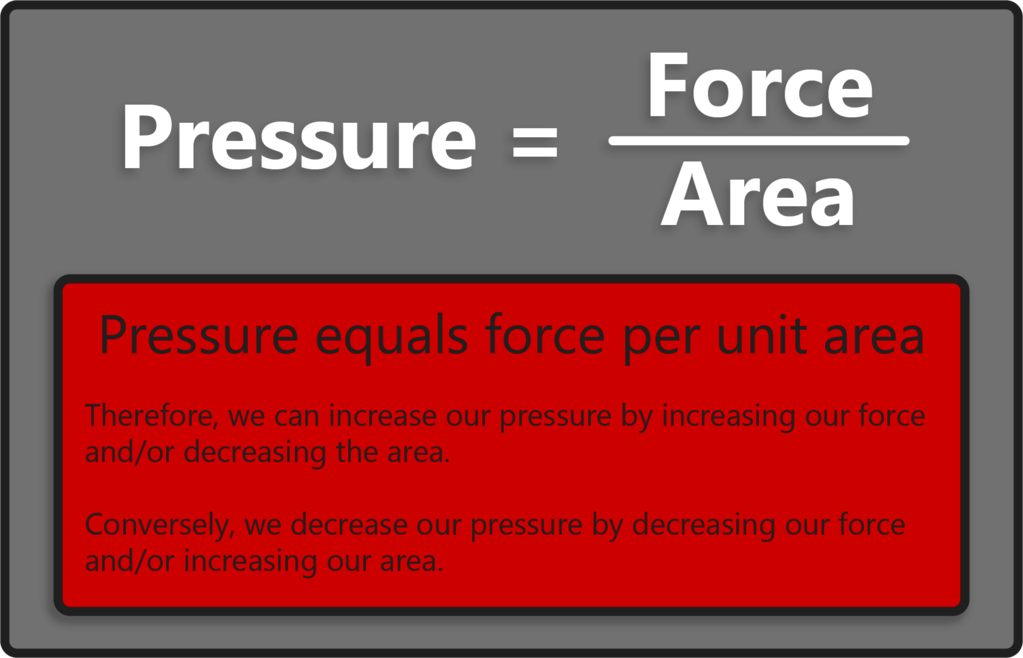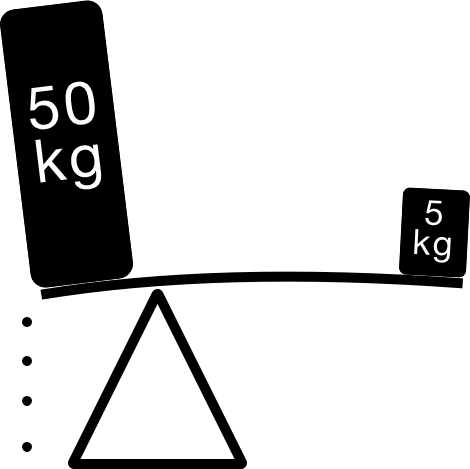
Balance, Pressure, and Leverage for BJJ
Balance, Pressure, and Leverage (BPL) are your keys to success in BJJ. You must learn how to manage your BPL in every phase and possible position. By effectively managing your Balance, Pressure, and Leverage and undermining the BPL of your opponent, you will progress from phase one to phase four of the ideal BJJ fight flow and be victorious. Let’s explore these three concepts in greater detail, starting with balance.
More...

Balance
Balance is something we take for granted. Most of us walk around all day and we’re in perfect balance; we’d be falling down all the time if we weren’t. Balance becomes a little trickier in a grappling scenario when another person is trying to upset our balance though. In a grappling scenario, it’s imperative to always be balanced, and always be able to defend our balance.
What does it mean to maintain balance? Most dictionary definitions of balance refer to a state of equilibrium or an equal distribution of weight. These definitions fall short of describing the balance we need in grappling. The reason why is because grappling occurs in a very dynamic environment – we’re dealing with unpredictable humans. Our opponent will apply push and pull forces in an unpredictable manner to our body. This makes achieving balance and not “falling over” a constant chore.
In grappling, we need to think of balance as the ability to remain steady (and not fall over) in a dynamic environment where push and pull forces are applied to us in an unpredictable manner. That’s a mouthful, but it captures what a grappler is trying to achieve when he maintains his balance. So, how do we maintain our balance and defend against the push and pull forces our opponent will apply to us? Let’s look at balance maintenance and defense next, starting with maintenance.
Maintaining Balance
Maintaining balance is a difficult chore for the inexperienced grappler. Look at two novice grapplers locking up and attempting to take one another down. Often, it looks like two men with death grips on each other, leaning into each other very hard and attempting to push each other over. I call this the “Frankenstein” for two reasons. First, it looks like the stiff posture of Frankenstein when he moves around, arms extended straight out in front. And, second, because it’s about as smart as Frankenstein.
The problem with the Frankenstein posture above is that you’re leaning into and pushing hard in one direction. This posture places your center of gravity way too far forward. You’ll only maintain balance with your opponent pushing back into you. If your opponent rapidly switches from a pushing to a pulling force, while also getting out of your way – you’ll fall forward in an unbalanced way. In this scenario, the athletes leaning far forward and pushing are failing to maintain their balance in an acceptable way. The problem is that they put their center of gravity in front of their base of support – that’s a rookie move, and we’ll discuss center of gravity and base of support next to explain why.
Two concepts are imperative to understand when it comes to grappling balance: Center of Gravity (CG), and Base of Support (BS). A human’s CG is a point that’s just above the hips and near the belly button. Half your bodily weight is above that point and half is below. To remain in balance, a grappler must keep his CG over his BS. Base of support is essentially the grappler’s foundation. It’s the part of their body that is connected to the earth. When a grappler is standing, his BS is the area underneath his feet and the area in a straight line between his feet. His base of support expands to include his hands and knees when those body parts contact the ground.
Now that we understand CG and BS, we can discuss the general way a grappler maintains his balance. It all starts with stance. Whether standing, crouching, or prone, we must always keep our CG as low as practical while also keeping our BS underneath our CG. Our “Frankenstein” grapplers above failed to do this – they were standing too upright and they pushed their CG far in front of their BS. Instead, they should have taken a more neutral stance and posture. Feet should be positioned approximately shoulder width apart, with one foot slightly in front of the other. Knees should be bent, hips should be lowered, elbows should be pulled in tight to the body, and the head should be erect and facing the opponent. The stance described above is a great start to maintaining balance. Similar concepts can be applied to positions other than standing. Things get trickier when an opponent actively tries to upset our balance. Balance defense will be discussed next.
Balance Defense
It’s not enough to simply maintain your balance because your opponent will actively destabilize you. This is when you’ll need to actively defend your balance. One of the best ways to defend your balance against an opponent is to actively grip fight. Let’s unpack the concept of grip fighting and why it’s so important in defending your balance.
For your opponent to upset your balance, they generally need to control you. To control you, your opponent will need to establish grips on you. Therefore, grip fighting is your key to preventing an opponent from controlling you, and ultimately upsetting your balance. Grip fighting has three components: preventing grips, breaking grips, and establishing your grips. Your best bet is to prevent your opponent from establishing grips and then establishing your own first. This puts him on the defensive and allows you to start working your game. If you’re late, and you allow your opponent to establish grips on you, now you’re defensive. At this point, you need to break grips and prevent them from being reestablished. If you’re not effectively grip fighting, your opponent will have the opportunity to control you and unbalance you.
That concludes our brief introduction to balance and its importance in grappling. Remember, balance should always be top of mind as you grapple. You must actively maintain your balance and defend any attempts to upset it. The key to being effective at this is to always to be mindful of your CG, and where your CG is in relation to your BS. Once your balance is assured, you can finally apply pressure on your opponent. Let’s discuss pressure and why it’s so important to a grappler next.
Pressure

The concept of pressure has two components here. There’s a literal pressure and a figurative pressure. Both are essential. Let’s unpack the literal component of pressure first.
Literal Pressure
We need literal pressure to do several things in grappling – everything from keeping an opponent stationary to forcing them to move. In general, we want to generate as much pressure as possible while also maintaining proper balance. So, how do we do this? Fortunately, science gives us a convenient equation for pressure.
Pressure equals force per unit area. And, since we have direct control over both force and area, we can easily affect the amount of pressure we’re applying in any given situation. To increase pressure, we must increase force and/or decrease area. Conversely, to decrease pressure, we must decrease force and/or increase area. Let’s discuss how we affect force and area in a grappling context. (Side note: for the sake of simplicity, we won’t go into any discussion of Newtons (N) or Pascals (Pa).)

We can affect force in three ways: (1) using our weight, (2) through pushing, and (3) through pulling. Let’s examine how we use these three in a side control situation. The scenario is this – one man is on top side control. He has a cross face and a far side underhook. His chest is on his opponent’s chest and his knees are on the ground. The top man can improve his pressure by first increasing the weight on top of the bottom man. He does this by taking his knees off the mat and allowing the bottom man’s chest to support his weight. The only contact the top man has with the earth is his toes.
Speaking of toes, let’s put those guys to work. They should be dug into the earth and the calves should be engaged to provide a pushing force into the bottom man. This greatly increases the force applied to the bottom man. All we have left to do to maximize force is to add a pulling motion. The top man needs to engage his biceps and lats to pull the bottom man’s head and his far arm toward the top man. The top man has now done everything he can to increase the force variable on the bottom man. That just leaves the area denominator to adjust to increase overall pressure.
Adjusting the area of your body in contact with your opponent is the easiest and most effortless way to affect your pressure. Let’s go back to the side control example. Recall that the top man has his chest flat against the bottom man’s chest. Let’s pretend that the area of contact between the two is a 5 by 10-inch rectangle. 5 times 10 gives us a 50 square inch area of contact. Also recall that we need to decrease the area of contact with our opponent to increase pressure. So, the top man needs to rotate his torso so that he contacts his opponent using the side of his chest (his upper rib cage area). This reduces the contact area to a 5 by 5-inch area. 5 times 5 gives us a 25 square inch area. That halves our contact area, which doubles our effective pressure on the bottom man.
Increasing the pressure on your opponent is relatively easy when you keep the pressure formula in mind. Simply increase your force by maximizing the weight your opponent must carry and then add some push and pull into the equation. Finally, reduce the contact area on your opponent where you’re directing all that force. Simple.
Figurative Pressure
Pressure isn’t all about math equations, weight distribution, and body positioning though. The second component of pressure has to do with pushing the action. You must create pressure on your opponent by continuing to be one or more steps ahead of them. This pressures your opponent to be reactive or defensive and stops them from becoming effective with their offense.
It’s important to always drive the action. Taking the pressure off your opponent for even a second allows them time to recover, think, and start working their offense. Jiu Jitsu is about staying multiple steps ahead of your opponent. So, keep pushing the action and force your opponent to be defensive by always bringing the pressure (figuratively).
Literal and figurative pressure are both critical to a grappler’s success in a fight. When this pressure is combined with proper balance, a grappler is 2/3rd's of the way to victory. The only missing component is leverage which is critical for everything from takedowns to sweeps to submissions. Let’s look at leverage in more detail next.
Leverage

We use leverage every day on and off the mats because our musculoskeletal system is made up of many levers. In fact, every major joint on your body is a fulcrum for a second or third-class lever. You may not remember the various classes (1, 2, and 3) of levers from high school physics, but just understand that levers are what allow our bodies to be animated. To have a lever, all we need is a fulcrum (or axis) and a rigid arm (our bones).
In grappling, we use the levers that animate our bodies to make more levers to control and ultimately submit our opponents. But why use leverage? Simply put, a lever makes work easier. A lever reduces the amount of force needed to move a load. A smaller man will not defeat a much larger man without leverage. Jiu Jitsu is about which man can position himself better to apply leverage to his opponent. This is true from phase one to phase four.
The most common type of lever we use in a grappling scenario is a first-class lever. In a first-class lever, the fulcrum lies between the force (or effort) and the load. There’s an effort arm and a load arm, and the effort and the load move in opposite directions. We use this lever because we want to achieve a mechanical advantage. So, how exactly do we achieve a mechanical advantage?
There are two variables we can easily affect when using a lever in grappling. The first, and most obvious is the amount of force we apply. Applying more force will allow you to do more work, but it won’t increase your mechanical advantage. We want to use leverage to multiply the force we can exert. We do this by changing the length of the load arm and the effort arm. This can be done in two ways. First, we can adjust whatever grip we have on a lever so that we are applying effort to the end of the effort arm. The next way to change the length of both arms is move the fulcrum. To increase mechanical advantage, we position the fulcrum as close as possible to the load. Doing so, maximizes effort arm length, minimizes load arm length, and gives you the greatest mechanical advantage.
It’s important to understand the underlying concept of leverage when you grapple. The effectiveness of most techniques depends on the effective use of leverage. Those that don’t understand leverage will have a hard time troubleshooting the problems they encounter when grappling.
